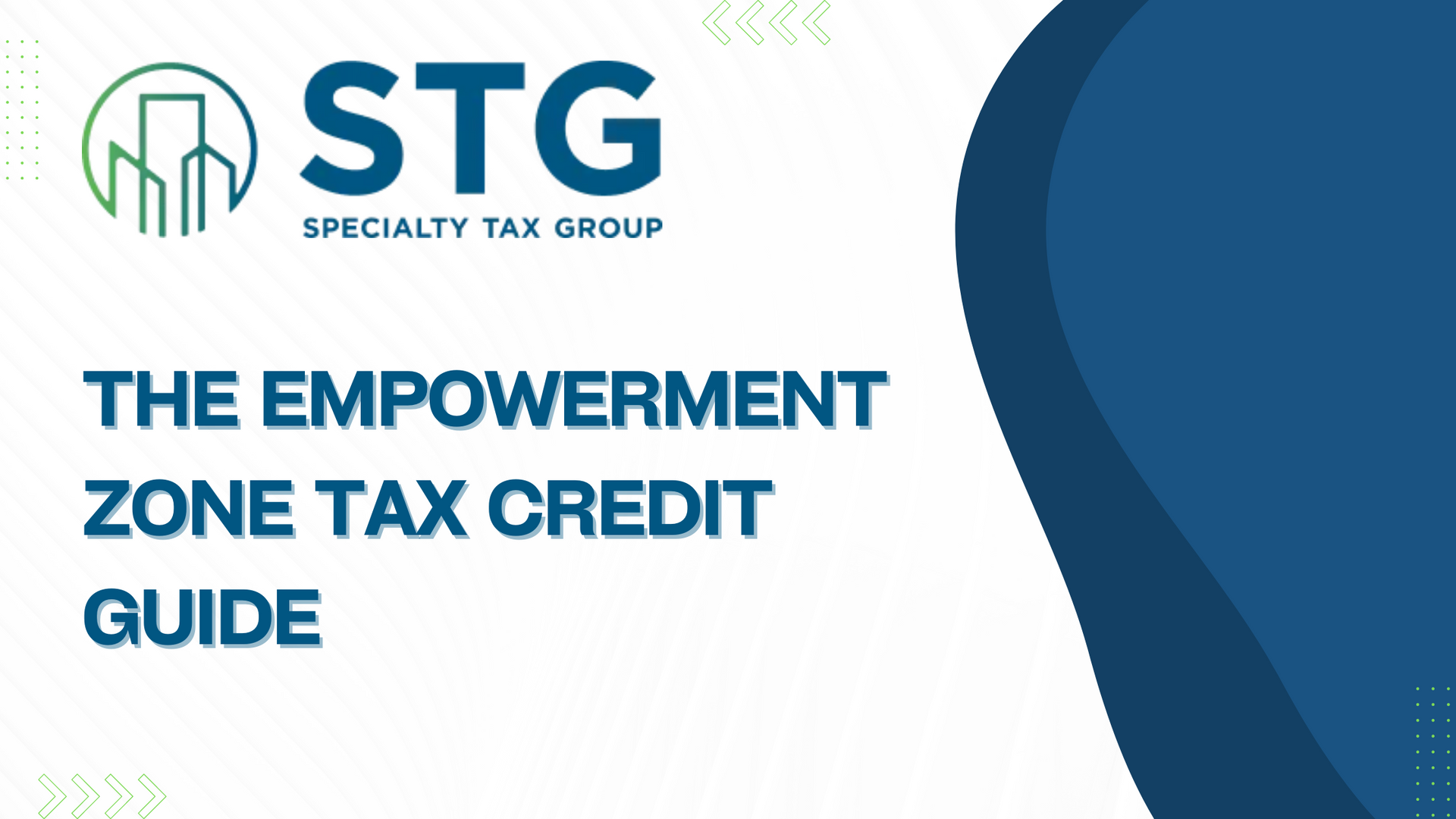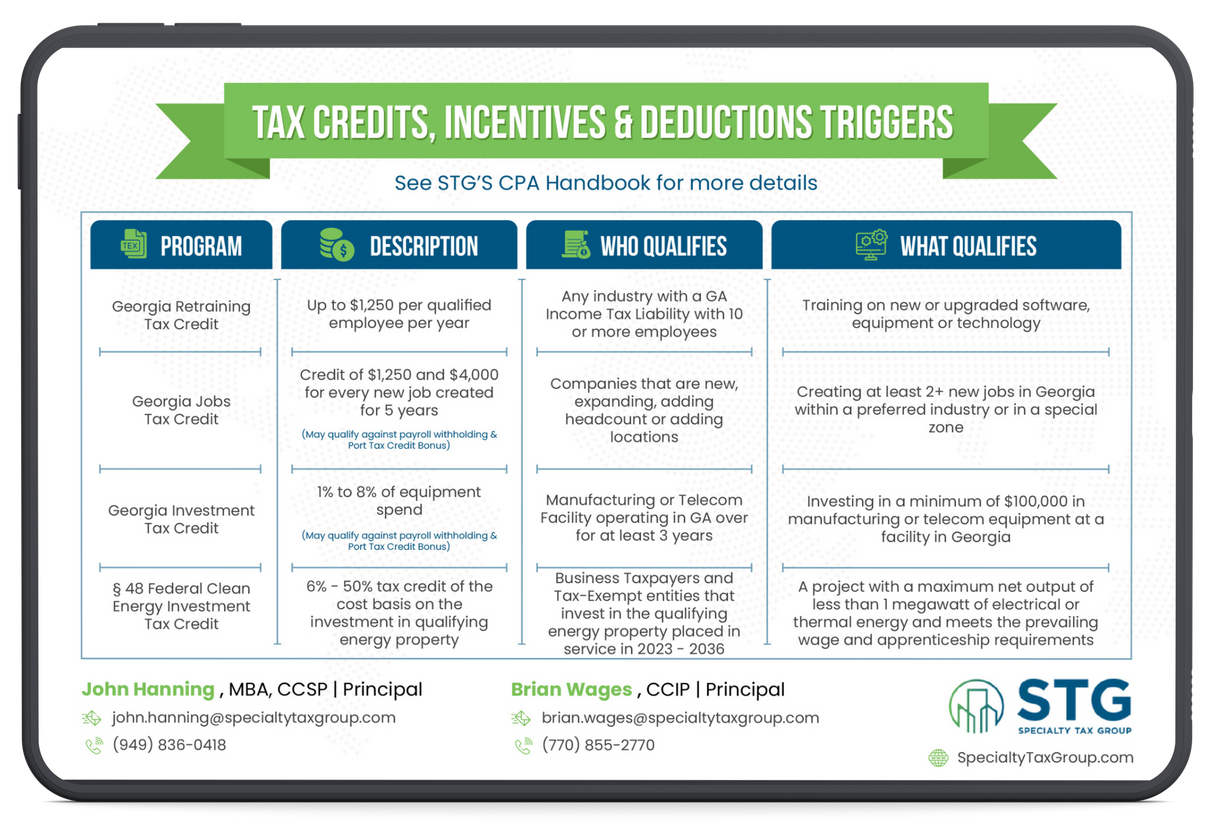This blog post has been researched, edited, and approved by John Hanning and Brian Wages. Join our newsletter below.
Newsletter Form
The Empowerment Zone Tax Credit: A Valuable Incentive for Businesses in Distressed Communities
Empowerment Zones (EZs) are a powerful tool for economic development in distressed urban and rural areas. Created through public and private partnerships, these zones aim to revitalize communities by attracting businesses and creating jobs. One of the key incentives for businesses operating in these areas is the Empowerment Zone Employment Tax Credit, which provides a significant tax benefit to companies that hire and retain employees living within the zones.
This article explores the insights provided by experts John Hanning, and Brian Wages on Empowerment Zone Credit, how it works, and how companies can take full advantage of this valuable incentive.
Understanding the Empowerment Zone Credit
What is the Empowerment Zone Credit?
The Empowerment Zone Employment Credit is a federal tax incentive designed to encourage businesses to operate in economically distressed areas and to hire residents of these areas. Specifically, businesses can receive a wage credit of up to $3,000 per year for each qualified zone employee. This credit is calculated as 20% of the first $15,000 in wages paid to each eligible employee each year. Both full-time and part-time employees qualify, provided they work at least 90 days during the year for which the credit is claimed.
Eligibility Requirements
To qualify for the Empowerment Zone Employment Tax Credit, businesses must meet several criteria:
- Location: The business must be located within a designated Empowerment Zone. These zones are designated by the Departments of Housing and Urban Development (HUD) and Agriculture (USDA) and include both urban and rural areas.
- Employee Residence: The employees for whom the credit is claimed must also reside within the Empowerment Zone.
- Employment Duration: Employees must work at least 90 days during the year in which the credit is claimed. There are exceptions to this requirement, such as if the employee is terminated due to misconduct or becomes disabled.
Calculating the Credit
The credit is 20% of the qualified zone wages paid to each employee, with a maximum of $15,000 in wages per employee per year. This means businesses can receive up to $3,000 per employee annually. The credit is renewable each year, and there is no limit to the number of employees a business can claim, as long as each employee lives in the EZ.
Benefits of the Empowerment Zone Credit
Financial Incentives
The primary benefit of the Empowerment Zone Credit is the financial savings on federal taxes. For businesses with multiple qualified employees, the savings can be substantial. This credit can be particularly beneficial for small and medium-sized businesses operating in economically distressed areas, as it directly reduces the cost of hiring and retaining employees.
Additional Tax Benefits
In addition to the wage credit, businesses located in Empowerment Zones may also be eligible for other tax incentives, including:
- Low-Cost Loans: Qualifying businesses may access low-cost loans through EZ facility bonds.
- Increased Section 179 Deductions: Businesses can claim increased deductions for certain types of property placed in service in an Empowerment Zone.
- Partial Exclusion of Capital Gains: Businesses can exclude a portion of the capital gains from the sale of certain assets held for more than five years.
These additional benefits further enhance the financial advantages of operating within an Empowerment Zone.
Community Impact
Beyond the financial incentives, the Empowerment Zone Credit helps foster economic development and job creation in distressed areas. By incentivizing businesses to hire local residents, the credit contributes to the overall revitalization of these communities, creating a positive cycle of investment and growth.
How to Claim the Empowerment Zone Credit
Determining Eligibility
The first step for businesses is to determine whether they are located in a designated Empowerment Zone. Specialty Tax Group can assist with this step by verifying the addresses on the HUD website and consulting the IRS's list of designated zones. It is important to note that while HUD.gov provides information on the locations of these zones, Specialty Tax Group will confirm their eligibility through official IRS documentation.
Employee Qualification
Next, businesses need to ensure that their employees meet the criteria for being "qualified zone employees." This involves verifying that the employees live within the Empowerment Zone and perform substantially all of their work within the zone. Businesses can use either the pay-period method or the calendar-year method to determine the period during which the employee has performed services in the zone.
Filing for the Credit
To claim the Empowerment Zone Credit, businesses must file IRS Form 8844, Empowerment Zone and Renewal Community Employment Credit. This form is used to calculate the credit and must be included with the business's annual tax return. Additionally, businesses must reduce their deduction for salaries and wages by the amount of the credit.
Special Considerations
Restrictions and Limitations
There are several restrictions and limitations associated with the Empowerment Zone Credit. For example, certain relatives of the employer, individuals owning more than 5% of the business, and employees working in specific industries (such as farming or businesses primarily selling alcoholic beverages) are not eligible for the credit.
Recordkeeping
Proper recordkeeping is essential for businesses claiming the Empowerment Zone Credit. Employers must maintain accurate records of employee wages, residency, and work location to substantiate their claims. This includes keeping documentation such as payroll records, employee addresses, and proof of the business's location within the Empowerment Zone.
Coordination with Other Credits
Businesses should be aware that the wages used to calculate the Empowerment Zone Credit cannot be used to claim other wage-based credits, such as the Work Opportunity Tax Credit (WOTC). Therefore, businesses need to carefully coordinate their tax planning to maximize the benefits of all available credits and incentives.
Conclusion
The Empowerment Zone Employment Credit offers significant financial incentives for businesses willing to invest in economically distressed areas and hire local residents. By understanding the eligibility requirements, benefits, and claiming process, businesses can take full advantage of this valuable credit. Not only does it provide substantial tax savings, but it also contributes to the revitalization and economic growth of Empowerment Zones across the country.
For more information on how Specialty Tax Group can help your business navigate the complexities of tax incentives, visit our Federal Tax Incentives page. Additionally, learn more about the Empowerment Zone Credit and other related topics on our Background page.
External Links
- IRS Form 8844, Empowerment Zone Employment Credit
- HUD's Empowerment Zone Information
- IRS Publication 954, Tax Incentives for Distressed Communities
By leveraging the Empowerment Zone Credit, businesses not only gain financially but also play a crucial role in revitalizing and strengthening communities in need. Contact Specialty Tax Group by
clicking here to assist you in maximizing these benefits and ensuring compliance with all requirements.






